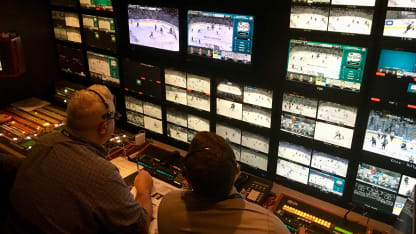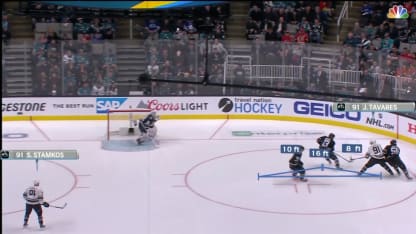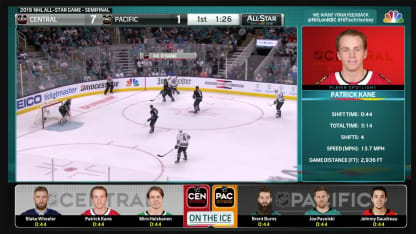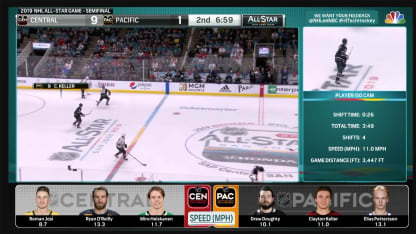When the Central Division had a 10-4 lead against the Pacific, Albert pointed out that the Pacific had more time in the offensive zone despite the score. That's something he never could have done before. The numbers were skewed because this was a 3-on-3 exhibition tournament full of breakaways. But this could be applied in the regular season or the Stanley Cup Playoffs.
"Sports fans are used to seeing, for example, time of possession in football, and that can tell a big story in terms of how that game's going," Albert said. "It's not really an official stat in hockey, but I know some teams track it. I think that's really cool to see."
NBC monitored feedback on social media and made adjustments based on it. By the championship game, Greenberg toned down the pointers. Viewers seemed to like the puck trail and the shift lengths at the bottom of the screen.
"We'll debrief with the visualization company and the League and we'll figure out next steps," Greenberg said. "Obviously the League has the intention of doing this next year, and there's stuff you can implement pretty quickly into a broadcast that is going to enhance the game."









